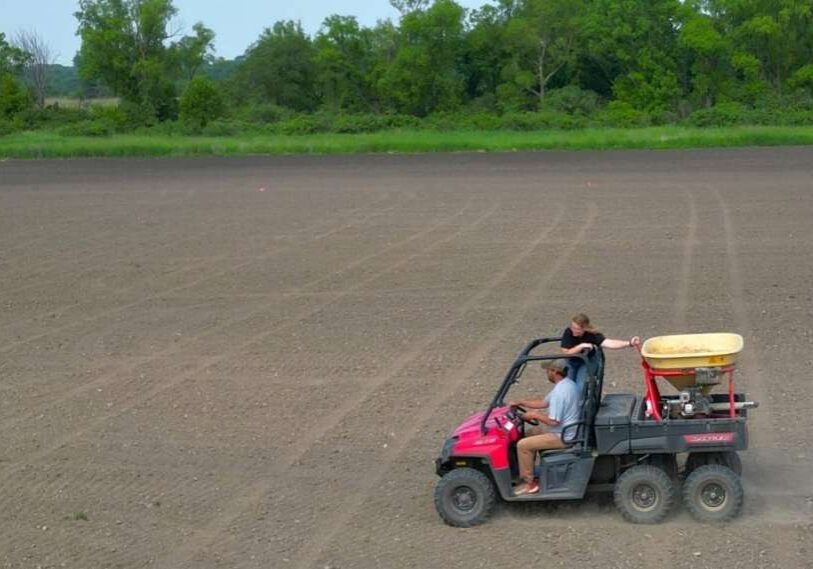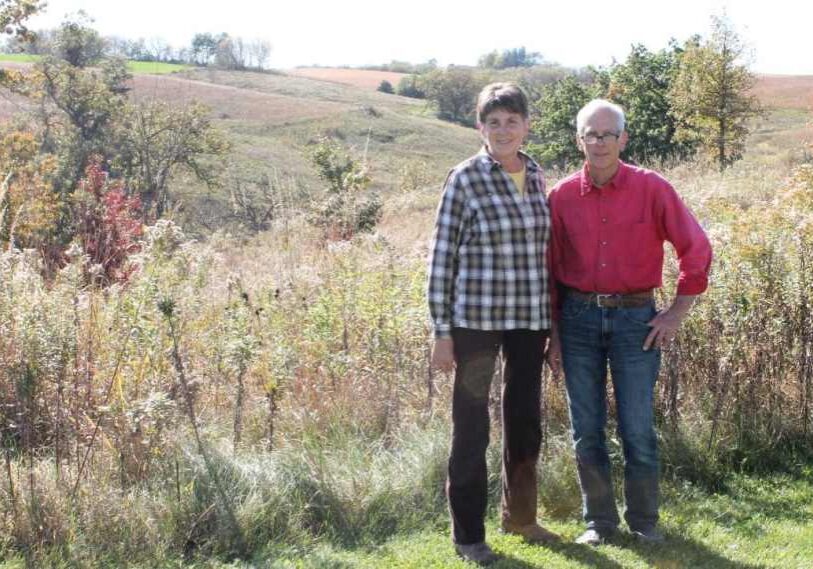Minnesota Officials Launch First Phase of Nitrate Mitigation Plan
MPCA recommends water testing for private well owners; proposes changes to feedlot permits.

RUSHFORD – “If you take anything away from this presentation today, it’s this: get your well tested,” Tannie Eshenaur told southeast Minnesotans earlier this summer.
Eshenaur, the Water Policy Center Manager at the Minnesota Department of Health (MDH), spoke to private well owners at a June Nitrate Open House – part of its education and outreach efforts related to groundwater pollution in southeast Minnesota. The meeting was held at the Rushford-Peterson school; additional meetings were held recently in Stewartville, Mazeppa and online.
The Rushford open house was the launch of the first phase of the state of Minnesota’s response to a directive by the U.S. Environmental Protection Agency (EPA) to reduce nitrate contamination in drinking water in the eight karst counties in southeast Minnesota.
The EPA sent a November 3, 2023 letter to state agencies requesting that the Minnesota departments of Health, Agriculture (MDA), and the Pollution Control Agency (MPCA) develop a coordinated and comprehensive work plan to address water quality issues in the counties of Dodge, Fillmore, Goodhue, Houston, Mower, Olmsted, Wabasha and Winona.
Karst geology, which forms the bedrock beneath this region, consists of fractured limestone and thin topsoil (less than 50 feet) that allows surface water to enter groundwater with little or no filtration.
Karst is evidenced by sinkholes, caves, and streams. In Fillmore County alone there are more than 10,000 sinkholes.
Department of Natural Resources dye tracings have shown that surface water that goes into the ground can travel up to 10 miles underground from a source point.
Contaminants on the land can enter the groundwater via a rain event or spring thaw. A short video by the Minnesota Department of Agriculture shows how groundwater moves in southeast Minnesota.
According to the MPCA, more than 70 percent of nitrate contamination comes from agricultural practices that include applying liquid nitrogen before planting or the application of animal manure to fields.

Tannie Eshenaur of the Minnesota Department Health led discussion at the nitrate open house, detailing the state’s response to the Environmental Protection Agency’s request that Minnesota address water quality issues in the eight karst counties of southeast Minnesota. (Photo by John Torgrimson)
Nitrate levels greater than the Maximum Contaminant Level (MCL) of 10 ppm/l (parts-per-million/liter) can cause Blue Baby Syndrome in newborns as well as birth defects, and has been linked to a range of cancers.
It is estimated that 94,000 people residing in the eight-county karst area use private wells. The EPA believes that there are over 9,000 people at risk of consuming water at or above MCL thresholds.
State agencies responded to the EPA with a three-phased plan that includes (1) outreach and education to private well owners; (2) public health intervention to ensure safe drinking water for vulnerable well owners; and (3) long-term environmental strategies to reduce nitrate concentrations in the eight-county area.
“Private well owners didn’t get to choose the geology from where their water comes from nor control the uses around them,” Eshenaur told the 50 or so people in attendance, many of them staffers from state agencies in attendance to answer questions.
She went on to say that public wells (like those owned by cities and municipalities) are very well regulated by state agencies, while private wells are left up to individual well owners (typically residents living in rural areas). She encouraged those with older or shallow wells to get them tested.
The Department of Health has an interactive Minnesota Well Index of private wells in the state, which allows the well owner to review information about their well.
The 2024 Minnesota legislature provided the Department of Health $2.79 million to identify and educate private well owners, offer free nitrate testing, and make regular updates available to the public.
The Department of Agriculture was awarded an additional $2.8 million for mitigation efforts, including providing free bottled water to select well owners, and in certain conditions pregnant women and families with babies less than 1 year old.

Margaret Wagner of the Minnesota Department of Agriculture was on hand at the nitrate open house to answer well owner’s questions. (Photo by John Torgrimson)
According to Eshenaur, the mitigation plan is expected to take 10 years and service 3,600 of the 36,000 wells in the eight-county area per year.
MPCA Proposes Changes To Feedlot Permits
Also discussed was the June 24, 2024 Minnesota Pollution Control Agency’s proposed changes to feedlot permits that regulate the state’s largest feedlots, which are generally 1,000 or more animal units.
According to the MPCA about 1,000 of the 17,000 registered feedlots in Minnesota operate under these permits, with the majority of them located in the southern half of the state.
With the proposed permits, farmers would have the option to apply manure in the spring or plant living cover on the landscape before applying manure in the fall. Presently, these Fall Nitrogen Fertilizer Restrictions are in place for 2024.
Farmers will also need to visually inspect the land during and after application to ensure manure is not leaving the field and to re-inspect the fields after application to ensure manure is not leaving the field. Farmers who do not incorporate their manure must inspect their fields if there is rainfall soon after manure is surface applied.
If approved, these changes would go into effect in 2028 and affect how livestock manure is applied to the land. However the action does not address how nitrogen fertilizers would be regulated.
45-day public notice period
The current federal National Pollution Discharge Elimination System (NPDES) general permit lasts five years and expires January 31, 2026. The current State Disposal System general permit expires May 31, 2025. These permits are required for large feedlot facilities.
The MPCA will conduct a 45-day public notice period, from June 24 to August 9, for the federal and state permits at the same time. Comments can be submitted by mail to Minnesota Pollution Control Agency c/o George Schwint, 12 Civic Center Plaza, Suite 2165, Mankato, MN 56001.
Additional Articles On Water Quality Published By Root River Current: Minnesota Nitrate Concerns Inspire Iowa Groups To Seek EPA Help Southeast Minnesota Runoff Pollutes Beyond Local Area Nitrate and Water Issue Proposals Addressed by 2024 Minnesota Legislature Local Forums, EPA Raise Questions About SE Minnesota Water Quality … State Agencies Respond State Officials: January 2024 Plan Addresses Nitrate Contamination Issues What Happens When Feedlots Get Bigger in Karst Country?






